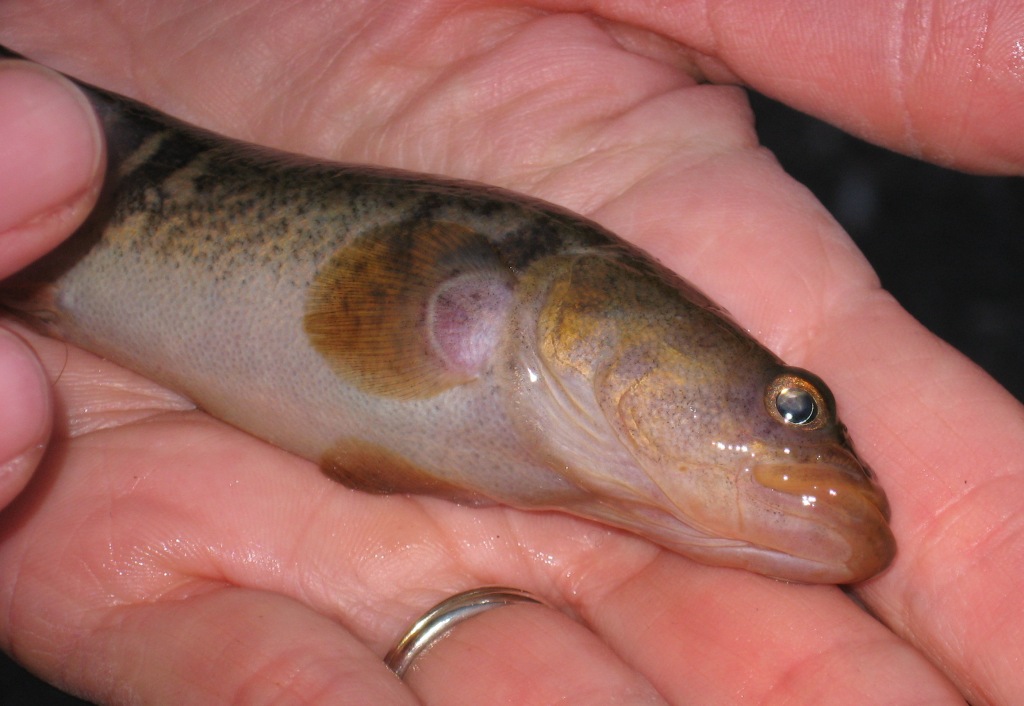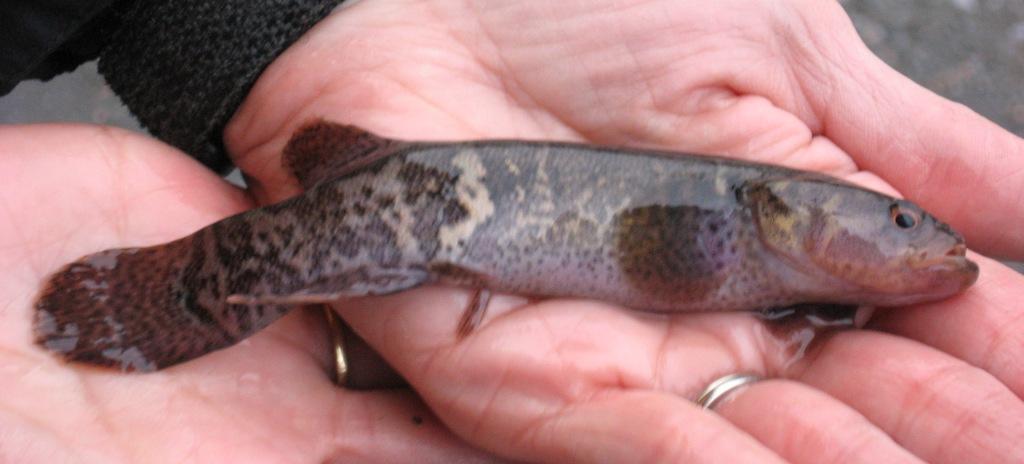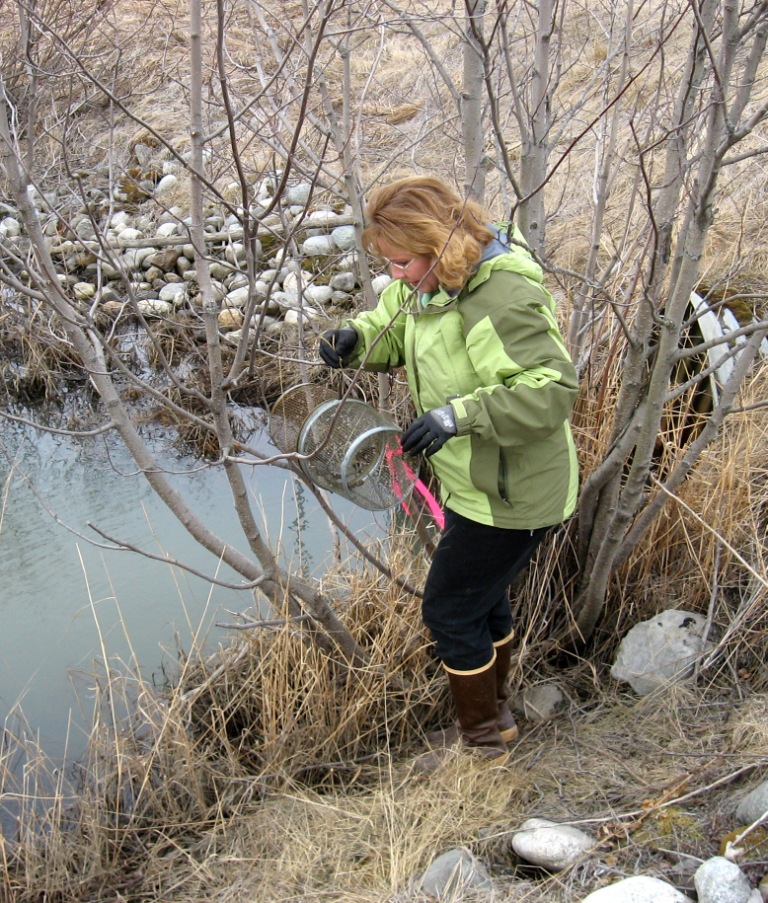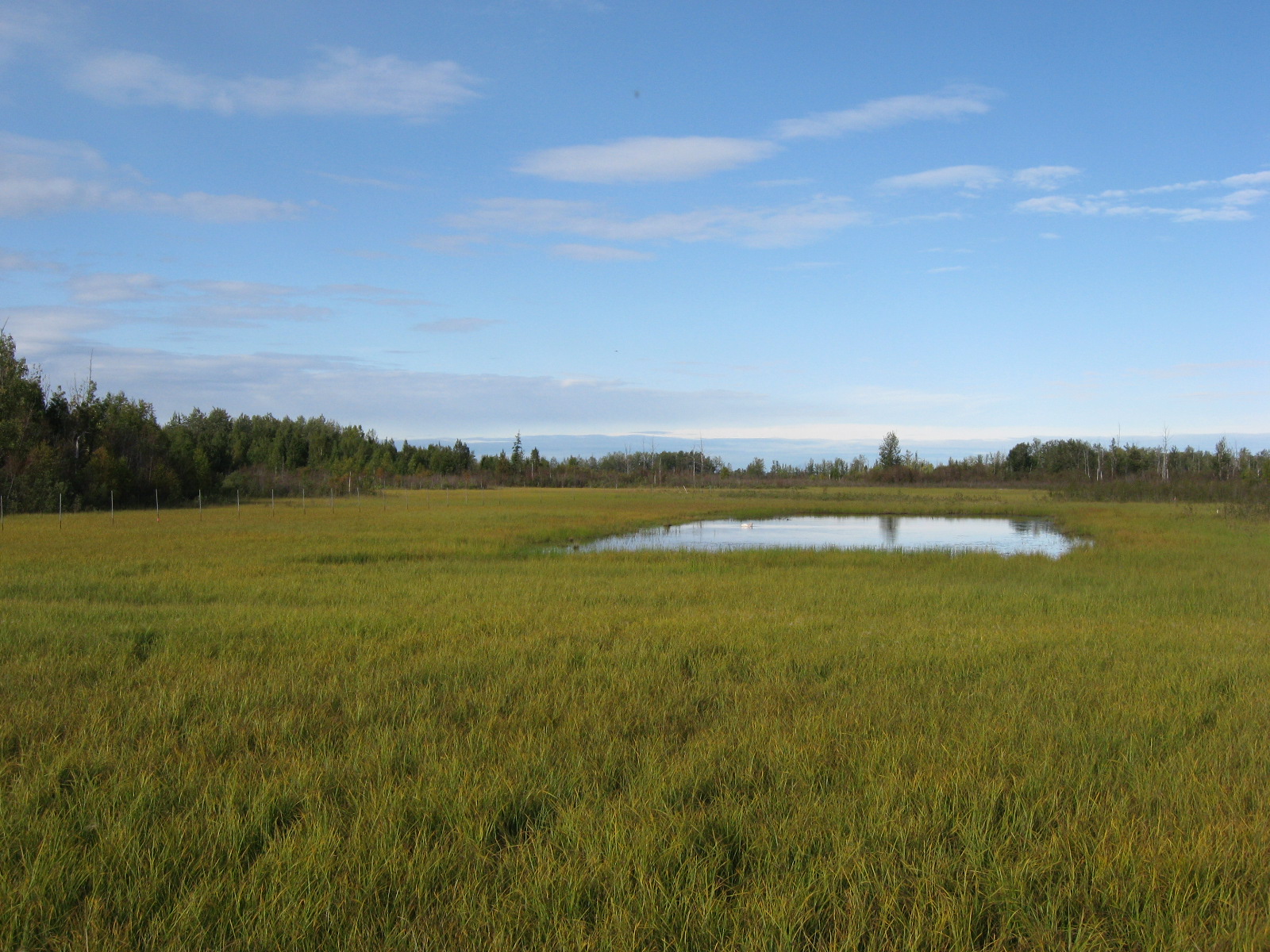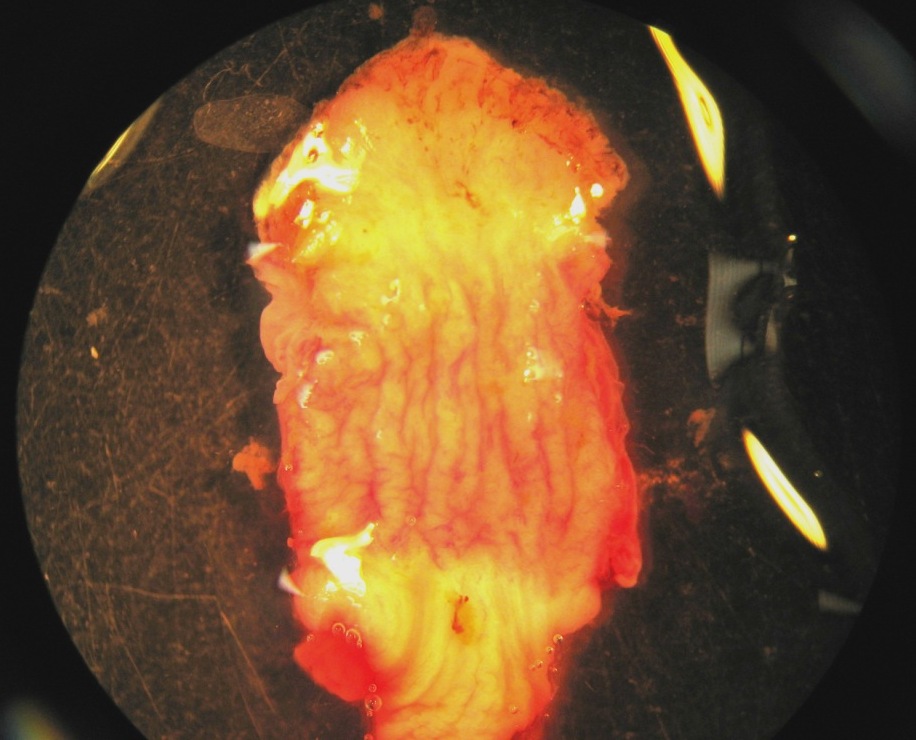Our lab has numerous 600 gallon cylindrical tanks outdoors in an enclosed yard I could use.
Sexing blackfish is a bit tricky; males should have longer dorsal fins and red-tipped fins during spawning season (but these features aren't always consistent, I discovered.)
Yes, I can use hormonal manipulation (a prof here uses hormones on his Xenopus African clawed frogs for egg development.) No, I don't have a chiller, but it sounds like I should try to get one.
I attempted unsuccessfully to artificially fertilize blackfish eggs last summer, using 50 fish collected in April/May and held in outdoor plastic wading pools during the summer. My lab studies threespine stickleback and members perform frequent "IVF" with stickleback, or in vitro fertilization of stripped gametes in a petri dish (Is quite amazing watching these embryos develop in only 6 days under a dissecting scope....) I tried this method with blackfish, sacrificing then removing eggs and testes, macerating testes, mixing with eggs. Ripe blackfish eggs should be clear and turn sticky when water-hardened. I ran out of females to dissect and when I tried to trap more out of Rabbit Slough, the fish were gone. Apparently, they all moved far upstream out of reach (accessing this stream upstream is nearly impossible, like slogging through an Amazonian jungle, due to brush, bears, fallen trees, and 2-3 feet deep muck in the bottom of the stream itself!)
I've attached a photo of one of my blackfish ovaries. Note the small white "recruitment" eggs which are believed to be spawned the following year. Also note the diverse eggs sizes and stages of development; I never quite found a perfectly ripe egg, very frustrating!
No one has to date described blackfish reproduction; we assume they spawn on vegetation, as eggs are adhesive and demersal. In Aspinwall's 1965 MS Thesis, in which he successfully artificially fertilized Lake Alegnagik (Bristol Bay) blackfish, he describes dredging up and searching through 300 lbs of lake vegetation during their 2 week spawning season in July, and not finding a single egg. He concluded these lake fish were total spawners during a 1-2 week period in July, in contrast to Blackett (1962) who described blackfish ovaries from Fairbanks specimens and concluded from the diverse egg development stages that the fish were batch spawners during a May-August period. Fish are assumed to be sexually mature at age 3, with exceptions.

Male blackfish, 14 cm TL, showing spawning coloration on fin edges
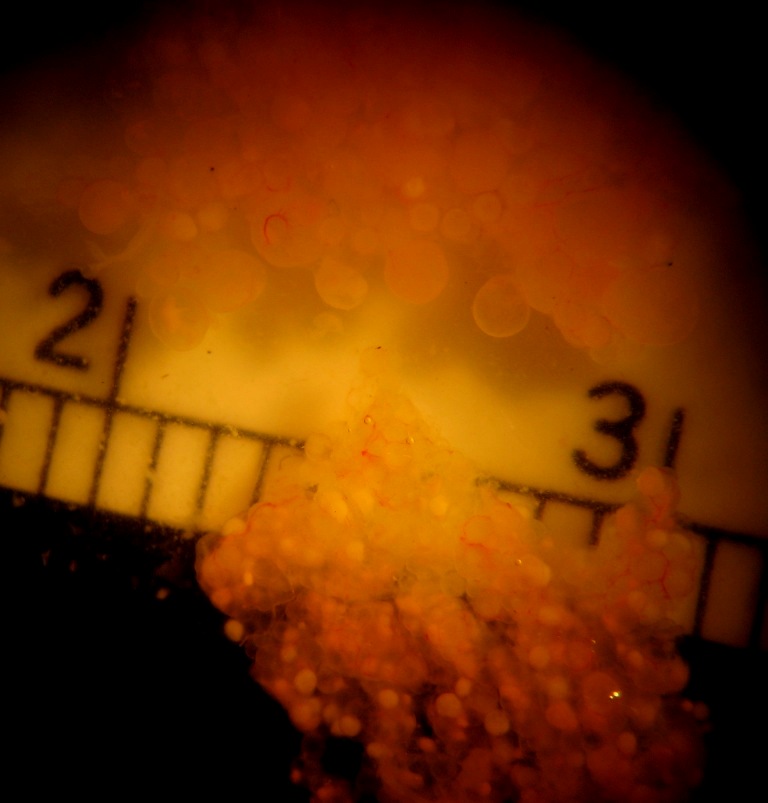
Very poor photo, my apologies! Dissected ovary from female collected in April and held in outdoor wading pool through July.
Edited by FishofSchool, 06 January 2010 - 12:42 AM.
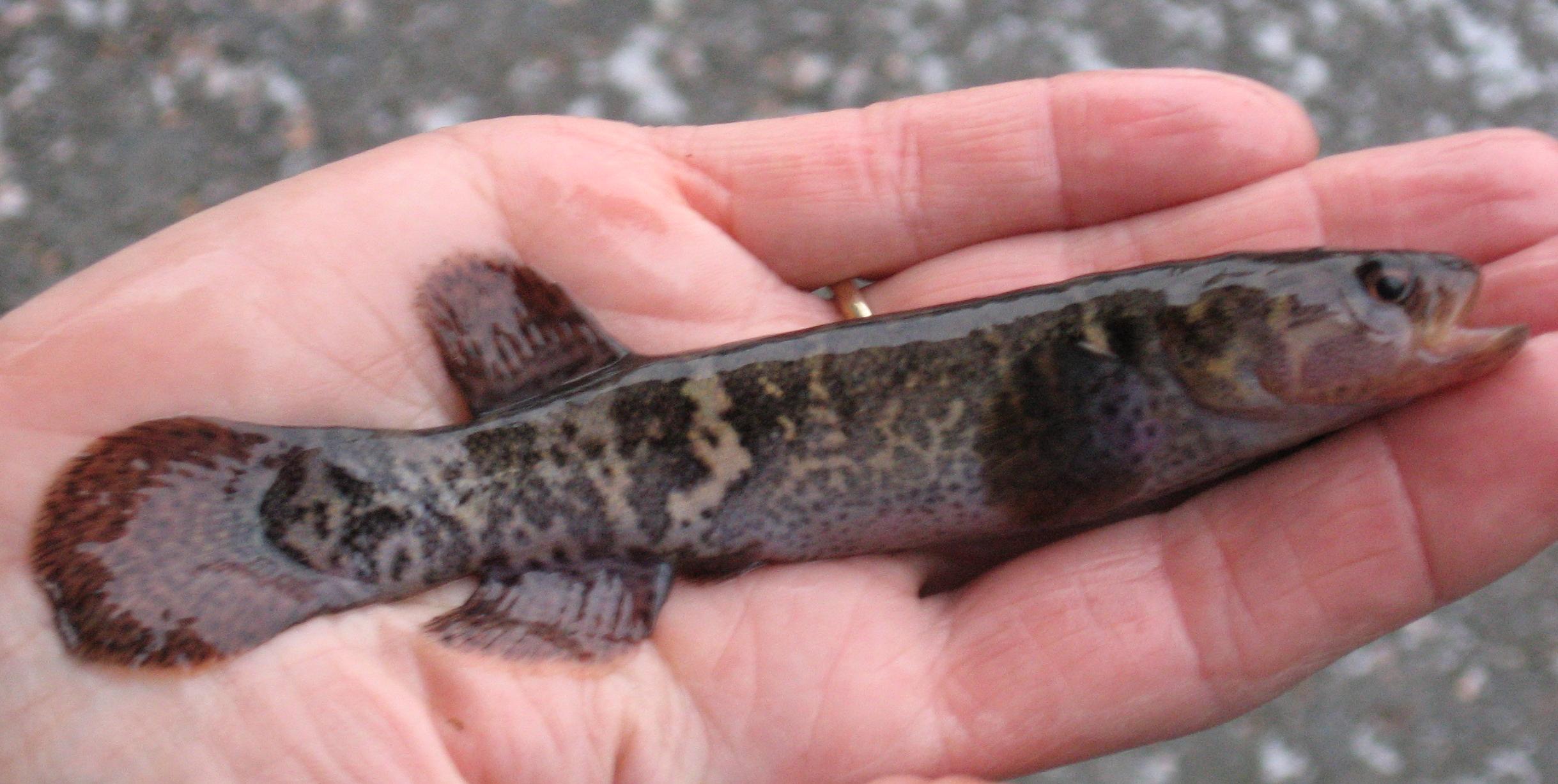 This Alaska blackfish is about 11 cm TL (total length). Blackfish from the Anchorage area average about 10-14 cm in length, although a record 33 cm fish was reported in Anchorage. All our area blackfish are introduced; native specimens are found in Western Alaska. Note the distinctive side patterning--a very beautiful little fish!
This Alaska blackfish is about 11 cm TL (total length). Blackfish from the Anchorage area average about 10-14 cm in length, although a record 33 cm fish was reported in Anchorage. All our area blackfish are introduced; native specimens are found in Western Alaska. Note the distinctive side patterning--a very beautiful little fish!

